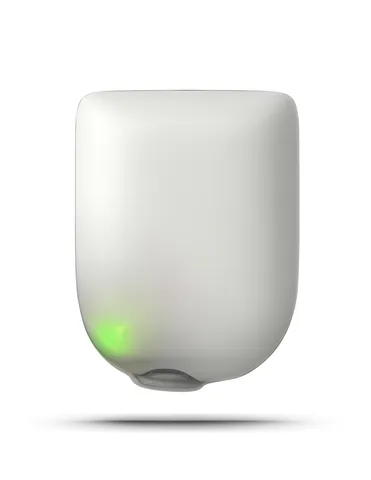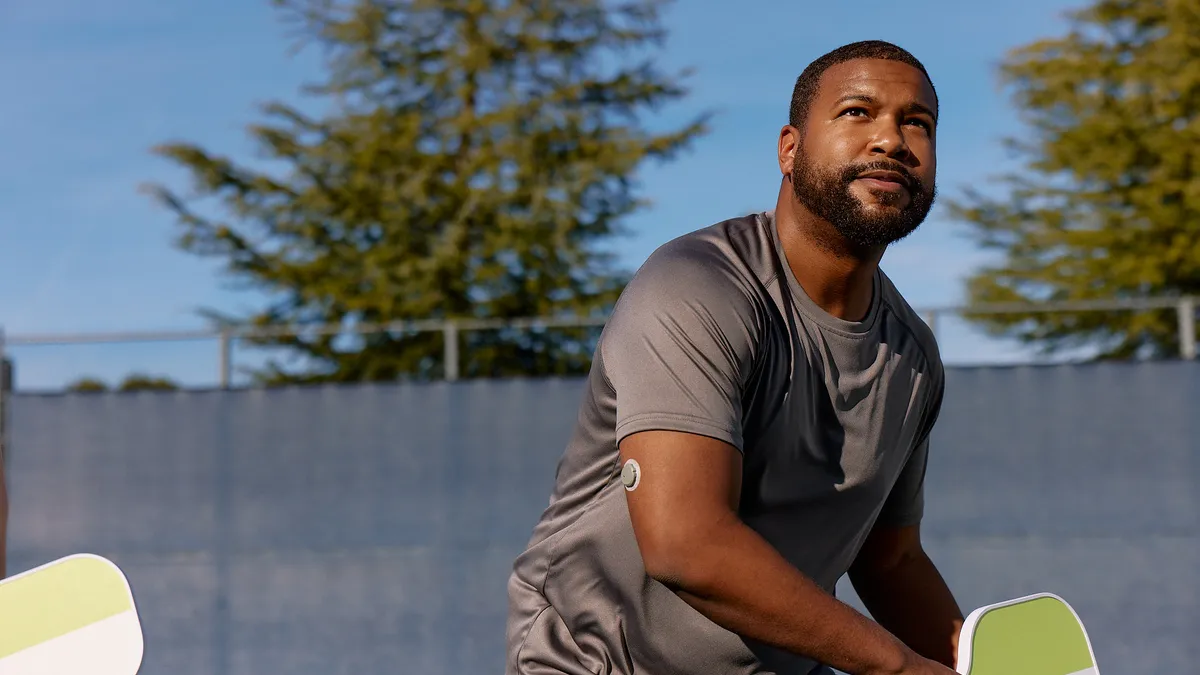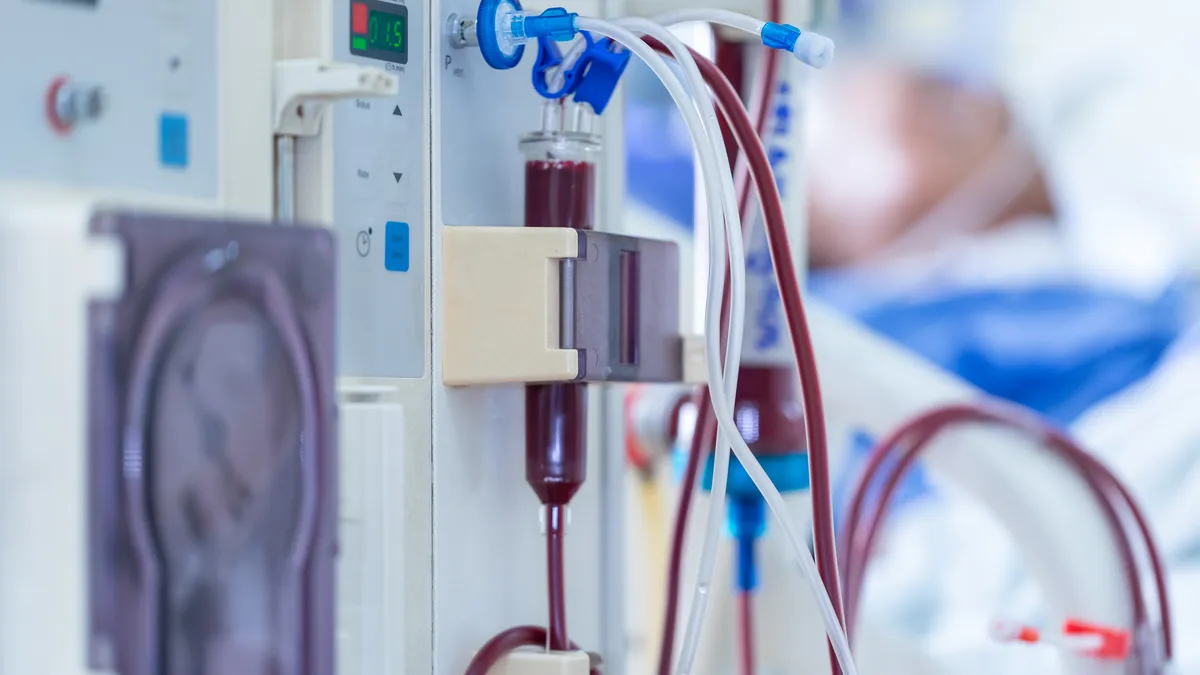Dexcom shared more details about its plans to sell an over-the-counter continuous glucose monitor this summer. The device, called Stelo, is intended for people with diabetes who don’t take insulin.
Stelo is one of several planned launches this year by diabetes technology companies focused on Type 2 diabetes, amid a coverage expansion by insurers. Last year, Medicare began covering CGMs for all people with diabetes who take insulin or have a history of hypoglycemia, removing a coverage requirement that people must take multiple daily doses of insulin.
Diabetes tech companies outlined their plans for upcoming products in first-quarter earnings calls and reaffirmed their focus on expanding coverage for more patients with Type 2 diabetes.
Dexcom to start OTC device sales online
Dexcom received Food and Drug Administration clearance for Stelo in March, making it the first company to get authorization in the U.S. to sell a CGM without a prescription. The company plans to launch Stelo this summer as a 15-day cash-pay product for an undisclosed price.
Dexcom will target the 25 million people in the U.S. who have Type 2 diabetes and are not taking insulin, or who don’t have severe hypoglycemia, CEO Kevin Sayer told investors in an April 25 earnings call.
“We want to get that product out quickly and make it very accessible to them,” Sayer said, adding that the best way to do that is to eliminate the prescription process.
Selling the device over the counter also makes it easier for clinicians who don’t have to call a pharmacy, Sayer said, while the label specifying the device must be an interoperable CGM ensures “we didn't just open up the floodgates for everybody to come in.”
Diabetes companies' Q1 sales
Dexcom plans to first sell Stelo on a website through individual purchases or a cash-pay subscription model. Sayer said the company started with this avenue instead of a pharmacy to provide more control at launch and allow Dexcom to better track utilization patterns.
“We believe people will be interested who don't have diabetes and will, in fact, use it and will purchase it,” he said. “But the focus, out of the gate, is in this marketplace where people have a direct need.”
Insurance coverage is another key component of access. Some plans cover CGMs for all people with diabetes, but they’re not the majority, Dexcom CFO Jereme Sylvain told investors. Sylvain said the company plans to get data to demonstrate the value to payers and employers, but he doesn't expect coverage in 2024.
Abbott is also working on a line of consumer wearables based on its CGM technology, called Lingo. The company debuted the wellness-focused devices in the U.K. in January, after quietly rolling out a website in 2023. Abbott also submitted the device to the FDA last year but didn’t share any updates on timing in an April earnings call.

Insulin pump makers also focus on Type 2
Insulin pump companies, including Insulet and Tandem Diabetes Care, are also working to make more devices available to people with Type 2 diabetes.
Insulet is currently in a commercial pilot of its Omnipod Go tubeless pump, which is intended to replace daily injections of long-acting insulin for people with Type 2 diabetes. Insulet received FDA clearance for the device last year.

“Because of our pilot efforts, we have developed a better understanding of this market and we have expanded the definition of targeted patient segments,” CEO Jim Hollingshead told investors in a May 9 call.
He added that the company was more confident about bringing the technology to a broader range of physician practices and is refining its plans for extended commercial reach based on those learnings.
Historically, Insulet has focused more on endocrinology practices. Device companies have the stereotype that more Type 1 patients are treated in endocrinology and more Type 2 patients are treated in general practice, Hollingshead said. But it’s not always that clear-cut.
“A lot of the intensive-insulin-using Type 2 patients are already in endocrinology. We also see them in primary care, and we see actually a surprising number of Type 1 patients being treated in primary care as well,” he said. “So we think the opportunity there is different and more promising than when we initially launched the pilot.”
Currently, Insulet sells its Omnipod Dash pumps for people with Type 2 diabetes who take multiple daily insulin shots. The company hopes to build on that by getting FDA clearance of its newer Omnipod 5 pump for these patients.
Insulet plans to submit an application to the FDA by the end of the year for a label expansion for Omnipod 5 in people with Type 2 diabetes, Hollingshead said, as the last patient recently completed the protocol for a pivotal trial. He added that Omnipod 5 prescriptions are already written off-label for Type 2 diabetes.
“That’s why we’re so excited to be getting so close to filing with the FDA for our label extension,” he said. “Because right now we’re out in the market with one arm tied behind our back.”
Tandem is also working on a Type 2 indication for its Control-IQ technology, which is used to automate insulin dosing by connecting Tandem’s pumps with a CGM.
The company expects to complete enrollment this month for a clinical trial to support the expanded indication, CEO John Sheridan told investors in a May 2 earnings call. After the three-month study ends, the company will prepare the report and send it to the FDA, putting it on track for a roughly 2025 launch.

When the Control-IQ technology is approved for Type 2, it can be used on any interoperable pump, Sheridan said. Tandem would introduce the expanded feature to its t:slim pumps and newer line of Mobi pumps simultaneously.
Tandem launched Mobi, a tiny, tubed pump, in February. So far, the reception has surpassed the company’s expectations, driving sales in what would typically be a slow quarter, CFO Leigh Vosseller said.
The company is working on a tubeless configuration of Mobi that would allow people to switch between the two options. However, Sheridan declined to say when that feature is planned.



















